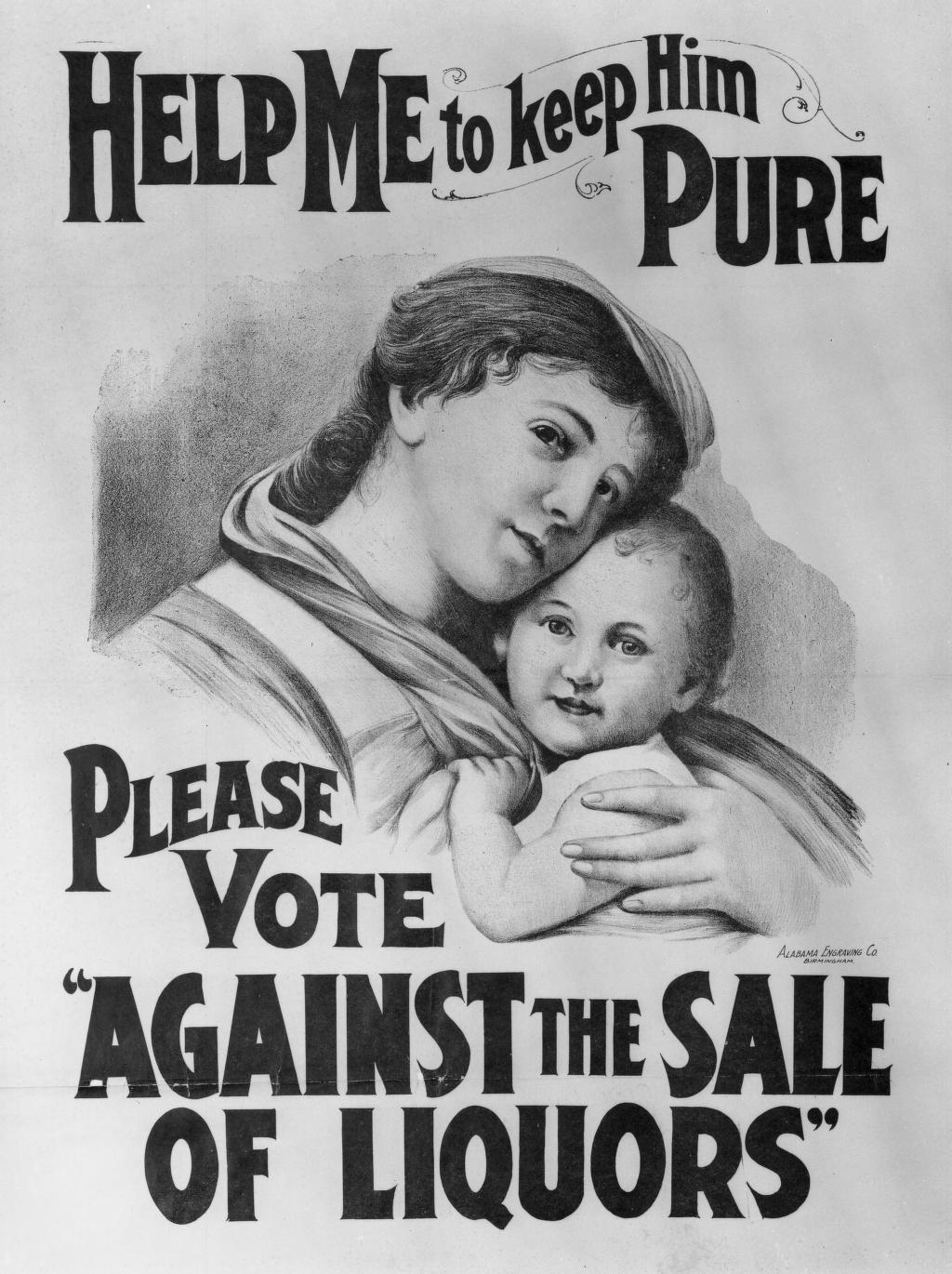4.2 The Temperance Movement & Alcohol Prohibition in Canada

Temperance
The term temperance means restraint or “moderation in action, thought, or feeling” (Merriam-Webster, n.d.). In terms of the temperance movement, the meaning refers to moderation or abstinence from alcohol consumption.
The Canadian Temperance Movement
The temperance movement was comprised of a number of temperance societies and religious/church organizations. Together they were one of the most powerful political and social lobbing groups in Canadian history (Hallowell, 1972; Schweighofer, 1988). The first temperance societies appeared in Canada in Montreal and Nova Scotia during the early 1800s (Schweighofer, 1988). By the latter part of the 19th century and early 20th century, the movement reached its peak of influence.
Promoting the belief that alcohol was a corrupting force, responsible for many social ills (CDPC, 2021), the temperance movement argued that alcohol was a threat to “the individual and the nation, [resulting in]…financial ruin, immorality, sexual impropriety, physical degeneration, and social collapse” (Mallack, August 3, 2018). Although in its early days the movement advocated for moderation or total abstinence from alcohol consumption, “total abstinence only” principles eventually dominated its position by 1835 (Mallack, 2018a; Schweighofer, 1988; Spence, 1923).
Canadian Temperance Organizations
There were numerous temperance societies in Canada (McGregor & Zalken, 2019). Some of the more well-known organizations active in the 19th century include:
- The Dominion Prohibitory Council/The Dominion Alliance for the Total Suppression of Liquor Traffic.
- The International Order of Good Templars.
- The Royal Templars of Temperance.
- The Sons of Temperance.
- The Women’s Christian Temperance Union (WCTU).
(Dupre & Vencatachellum, 2005; McGregor & Zalken, 2019; All about Canadian History, 2017b).
The Women’s Christian Temperance Union (WCTU), whose first Canadian chapter was founded in 1875, played a dominant role in the push for alcohol prohibition in Canada (Ministry of Government and Consumer Services, n.d.; CBC Digital Archives, 1978; McGregor & Zalken, 2019).
VIDEO: Dr. C. Heron: Prohibition and the Regulation of Liquor
In the following video Dr. Craig Heron talks about prohibition and the regulation of liquor in Canada.
Canadian Alcohol Prohibition Policy
1. The Dunkin Act (1864)
Referred to as “the local option,” this Act provided the option for the regional prohibition of alcohol in the Province of Canada (Quebec and Ontario post confederation) (Dupre & Vencatachellum, 2005; Spence, 1923). It allowed any county or municipality within the province to prohibit the retail sale of alcohol if supported by a majority vote (Canada Department of Trade and Commerce, 1939; Spence, 1923).
2. The Scott Act/The Canadian Temperance Act (1878)
This Act extended the “local option” process introduced in the Dunkin Act to the entire country (Canada Department of Trade and Commerce, 1939; Moffit, 1932; Spence, 1923).
Indigenous Peoples & Alcohol Prohibition
An amendment to the Indian Act (1884) made it a felony for Indigenous people to purchase, consume, or to enter a licensed drinking establishment. It also made it illegal to sell or supply alcohol to an Indigenous person (Indigenous Corporate Training, 2016; Hinge, 1985). It wasn’t until 1985 that all discriminatory liquor polices both “on and off reserve were repealed… and band councils were… given powers to control the sale and possession of liquor” (Indigenous Corporate Training, 2016, para. 18).
3. Canadian Referendum on National Prohibition (1898)
A national referendum was held on the implementation of a national prohibition policy. Although the referendum passed by a very slim majority (51%), the policy was never enacted (Boyce, 1923; Canada Department of Trade and Commerce, 1939; Dupre & Vencatachellum, 2005).
4. The War Measures Act (1915-18)
Prohibition was enacted in each province under this Act in 1914 (Dupre & Vencatachellum, 2005). It was promoted by the Dominion Alliance as a “patriotic measure” that would conserve needed resources (Hiebert, 1969). The form that prohibition took varied by province, with Quebec and the Yukon not participating (Canada Department of Trade and Commerce, 1939) and some provinces continuing to permit the manufacture and export of alcohol (beer and/or liquor) (Boyce, 1923). Although the federal prohibition ended shortly after WWI, some provinces continued their prohibition polices. In 1948, PEI became the last province to end alcohol prohibition (Prohibition in Canada, n.d.a).
Click the link below to learn more about temperance and alcohol prohibition in Canada:
Windsor & Detroit During Prohibition

Click the links below to learn about the role Windsor ON played in early alcohol prohibition:
Windsor Star Article “From the Vault: Prohibition”
VIDEO: Crooked Cops & Blind Pigs: A History of Prohibition
In the context of prohibition, abstinence refers to the belief that one must refrain from the consumption of alcohol, often to uphold moral or religious (mainly Christian) beliefs. It placed responsibility onto the individual to abstain from alcohol consumption, with moral and eternal consequences for failing to do so (Belshaw, 2016).
Upper and Lower Canada were combined and renamed the Province of Canada in 1840. As part of the preparation for Canadian Confederation, in 1867 the Province of Canada was split into two new provinces: Ontario and Quebec (Canada, December 15, 2016).

